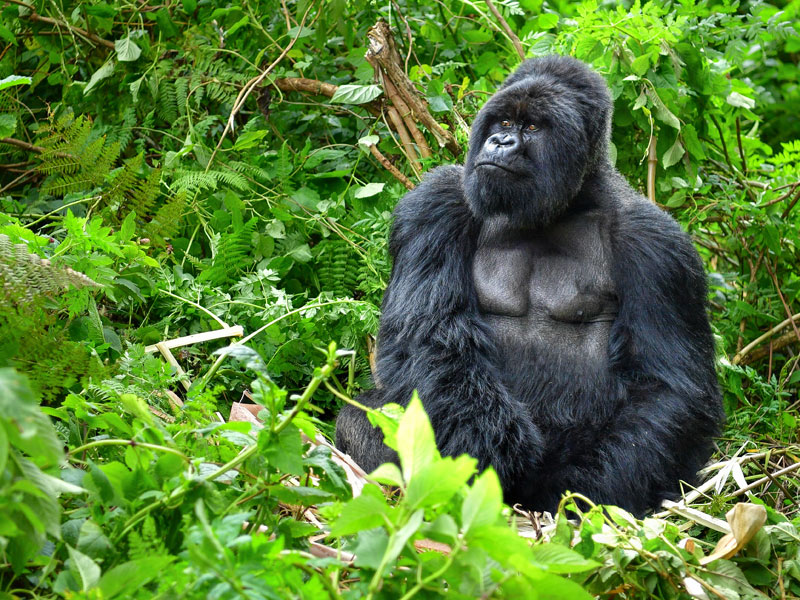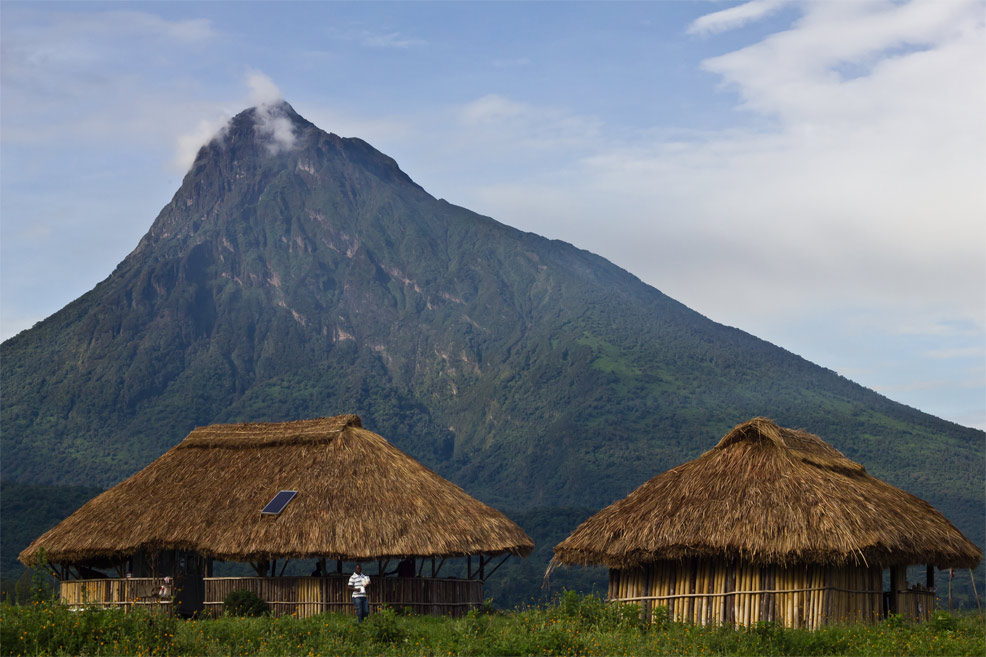
3rd June 2018 Mountain gorilla numbers exceed 1,000 Numbers of critically endangered mountain gorillas are on the up, following conservation efforts in the transboundary Virunga Massif – one of the two remaining areas where the great ape is still found.
The results of a detailed survey, published this week, reveal their numbers there have increased from an estimated 480 in 2010 to 604 today. This includes 41 social groups, along with 14 solitary males in the transboundary area. When combined with figures published from Bwindi Impenetrable National Park (where the rest of the sub-species is located), this brings the global wild population of mountain gorillas to an estimated 1,004. It makes them the only great ape in the world that is considered to be increasing in population. These findings are the result of intensive surveying coordinated by the Greater Virunga Transboundary Collaboration and supported by the International Gorilla Conservation Programme (IGCP – a coalition programme of Fauna & Flora International and WWF), alongside other partners. "When I first visited the mountain gorillas in 1979, the situation was dire; the number of these remarkable animals was dreadfully small," said Fauna & Flora International vice-president and WWF-UK's ambassador, Sir David Attenborough. "It is incredibly heartening, therefore, to see how the efforts of so many different groups – communities, governments, NGOs – have paid off. The threats to mountain gorillas haven't disappeared entirely, of course, so now the challenge must be to ensure that these achievements are sustained long into the future."
Despite this good news, direct threats from wire and rope snares persist. During the surveys, the teams found and destroyed over 380 snares, which were set for antelope but can also kill or harm gorillas. One of the snares discovered by the researchers contained a dead mountain gorilla. Ongoing conflict and civil unrest in the region also present a risk, impacting both people and wildlife. A number of rangers have been killed in recent weeks in the Democratic Republic of Congo's Virunga National Park. In the medium to longer term, new threats will be looming large on the horizon – including climate change, infrastructure expansion and the ever-present spectre of disease, which has the potential to devastate the remaining populations. This applies to many other primate species, not just mountain gorillas. The majority of the world's 504 primate species may vanish in the next 25 to 50 years, unless these trends reverse. This latest census involved 12 teams from over 10 institutions, who covered more than 2,000 km of difficult, forested terrain, systematically searching the mountain gorilla habitat for signs of the animals, recording nest sites and collecting samples for genetic analysis. The researchers also looked for evidence of threats to gorillas and other wildlife. "We have seen a remarkable transformation in the fortunes of this great ape," said Alison Mollon, director at Fauna & Flora International. "This turnaround is thanks to extraordinary efforts by all those who have persisted through immense challenges, sometimes even risking their own lives to protect these great apes. Today, mountain gorilla numbers are looking much healthier, but this is no time for complacency. We need to remain extremely vigilant, particularly in light of the ever-present and growing threat posed by the transmission of human-borne diseases that are relatively innocuous for us, but potentially fatal to other primates." "This is fabulous news for mountain gorillas and shows what we can do for wildlife when NGOs, governments and their communities work together," commented Margaret Kinnaird, Wildlife Practice Leader at WWF International. "However, the high number of snares encountered and the numerous other threats they face including climate change indicate that the battle is far from won. The three gorilla range countries and their partners must continue to work together to safeguard the Virunga Massif – not only for the protection of these incredible creatures, but also for the welfare of the local people with whom they share these landscapes. The mountain gorilla story can be a model for how to restore and maintain our Earth's precious biodiversity."
Comments »
If you enjoyed this article, please consider sharing it:
|








